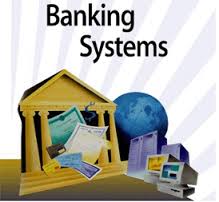Bangladesh-The Banking System
The banking system at independence consisted of two branch offices of the former State Bank of Pakistan and seventeen large commercial banks, two of which were controlled by Bangladeshi interests and three by foreigners other than West Pakistanis. There were fourteen smaller commercial banks. Virtually all banking services were concentrated in urban areas. The newly independent government immediately designated the Dhaka branch of the State Bank of Pakistan as the central bank and renamed it the Bangladesh Bank. The bank was responsible for regulating currency, controlling credit and monetary policy, and administering exchange control and the official foreign exchange reserves. The Bangladesh government initially nationalized the entire domestic banking system and proceeded to reorganize and rename the various banks. Foreign-owned banks were permitted to continue doing business in Bangladesh. The insurance business was also nationalized and became a source of potential investment funds. Cooperative credit systems and postal savings offices handled service to small individual and rural accounts. The new banking system succeeded in establishing reasonably efficient procedures for managing credit and foreign exchange. The primary function of the credit system throughout the 1970s was to finance trade and the public sector, which together absorbed 75 percent of total advances.
The government’s encouragement during the late 1970s and early 1980s of agricultural development and private industry brought changes in lending strategies. Managed by the Bangladesh Krishi Bank, a specialized agricultural banking institution, lending to farmers and fishermen dramatically expanded. The number of rural bank branches doubled between 1977 and 1985, to more than 3,330. Denationalization and private industrial growth led the Bangladesh Bank and the World Bank to focus their lending on the emerging private manufacturing sector. Scheduled bank advances to private agriculture, as a percentage of sectoral GDP, rose from 2 percent in FY 1979 to 11 percent in FY 1987, while advances to private manufacturing rose from 13 percent to 53 percent.
The transformation of finance priorities has brought with it problems in administration. No sound project-appraisal system was in place to identify viable borrowers and projects. Lending institutions did not have adequate autonomy to choose borrowers and projects and were often instructed by the political authorities. In addition, the incentive system for the banks stressed disbursements rather than recoveries, and the accounting and debt collection systems were inadequate to deal with the problems of loan recovery. It became more common for borrowers to default on loans than to repay them; the lending system was simply disbursing grant assistance to private individuals who qualified for loans more for political than for economic reasons. The rate of recovery on agricultural loans was only 27 percent in FY 1986, and the rate on industrial loans was even worse. As a result of this poor showing, major donors applied pressure to induce the government and banks to take firmer action to strengthen internal bank management and credit discipline. As a consequence, recovery rates began to improve in 1987. The National Commission on Money, Credit, and Banking recommended broad structural changes in Bangladesh’s system of financial intermediation early in 1987, many of which were built into a three-year compensatory financing facility signed by Bangladesh with the IMF in February 1987.
One major exception to the management problems of Bangladeshi banks was the Grameen Bank, begun as a government project in 1976 and established in 1983 as an independent bank. In the late 1980s, the bank continued to provide financial resources to the poor on reasonable terms and to generate productive self-employment without external assistance. Its customers were landless persons who took small loans for all types of economic activities, including housing. About 70 percent of the borrowers were women, who were otherwise not much represented in institutional finance. Collective rural enterprises also could borrow from the Grameen Bank for investments in tube wells, rice and oil mills, and power looms and for leasing land for joint cultivation. The average loan by the Grameen Bank in the mid-1980s was around Tk2,000 (US$65), and the maximum was just Tk18,000 (for construction of a tin-roof house). Repayment terms were 4 percent for rural housing and 8.5 percent for normal lending operations.
The Grameen Bank extended collateral-free loans to 200,000 landless people in its first 10 years. Most of its customers had never dealt with formal lending institutions before. The most remarkable accomplishment was the phenomenal recovery rate; amid the prevailing pattern of bad debts throughout the Bangladeshi banking system, only 4 percent of Grameen Bank loans were overdue. The bank had from the outset applied a specialized system of intensive credit supervision that set it apart from others. Its success, though still on a rather small scale, provided hope that it could continue to grow and that it could be replicated or adapted to other development-related priorities. The Grameen Bank was expanding rapidly, planning to have 500 branches throughout the country by the late 1980s.
Beginning in late 1985, the government pursued a tight monetary policy aimed at limiting the growth of domestic private credit and government borrowing from the banking system. The policy was largely successful in reducing the growth of the money supply and total domestic credit. Net credit to the government actually declined in FY 1986. The problem of credit recovery remained a threat to monetary stability, responsible for serious resource misallocation and harsh inequities. Although the government had begun effective measures to improve financial discipline, the draconian contraction of credit availability contained the risk of inadvertently discouraging new economic activity.
Foreign exchange reserves at the end of FY 1986 were US$476 million, equivalent to slightly more than 2 months worth of imports. This represented a 20-percent increase of reserves over the previous year, largely the result of higher remittances by Bangladeshi workers abroad. The country also reduced imports by about 10 percent to US$2.4 billion. Because of Bangladesh’s status as a least developed country receiving concessional loans, private creditors accounted for only about 6 percent of outstanding public debt. The external public debt was US$6.4 billion, and annual debt service payments were US$467 million at the end of FY 1986.
Banking System
At the moment financial sector reform programmes are underway. Private banks and insurance companies with few exceptions are functioning creditably. Uttara, Pubali and Rupali Banks which were formally owned by the GOB were privatized. Shadaran Bima Corporation’s (General Insurance) 49% shares are contemplated to be off loaded in the local stock markets soon.
Bangladesh pursues a liberal market economy. Bangladesh Bank is the apex bank of the country responsible for promoting healthy growth and development of the banking system. Banks and insurance companies, both in the private and public sectors, are operating freely and contributing to the economy. Foreign banks like American Express Bank, Standard Chartered Bank, Grindlays Bank, Indosuez Bank, etc. function in Bangladesh through their branches.
There are other specialized financial institutions like the Bangladesh Shilpa Bank (Industrial Bank), Bangladesh Shilpa Rin Sangstha (Industrial credit organization), Krishi (Agriculture) Bank, House Building Finance Corporation, Grameen (Rural) Bank and several cooperative banks. The Industrial Promotion and Development Corporation (IPDC) of Bangladesh and the Investment Corporation of Bangladesh (ICB) provide equity support to public limited companies in the private sector. The government has recently replaced the Controller of Capital Issues by establishing a full fledged Securities and Exchange Commission with enhanced power for the growth and development of the Securities market in Bangladesh. Liberal fiscal policy has resulted in the highest forex reserve.
During the last three years a number of steps have been taken to strengthen the country’s banking system. These include improvement of the regulatory environment. enforcement of loan classification guidelines and recapitalisation of nationalized commercial banks. Over the past two years, there has been a massive infusion of taka 32,000 million in the NCBs in the shape of government bonds to make up for capital and provisioning shortfalls.
The commercial banks are now diversifying and strengthening their portfolio. They have increased term lending. Upto April 1994 they have sanctioned term loans totaling taka 10,260 million. Disbursement agricultural loans stood at taka 9,660 million 31 % increase over the same period in 1993. NCBs have introduced loan programmes in off-farm and agro-based activities. NCBs, BSB and BSR have been able to rehabilitate 471 sick industrial units which have create 21,000 new jobs.
The government is keen to correct and remedy failures and imperfection in the financial markets. A small credit guarantee scheme has been introduced, to assist new entrepreneurs who can receive loan of taka 2.5 million without any collateral. To enlarge the activities of Grameen Bank, which serves the poor, particularly the women in the rural areas, the government has provided guarantee against loans amounting to taka 4,650 million in 1993-94 in addition to taka 1000 million provided directly by the Bangladesh Bank. In the fiscal year 1994-95 the government has already committed to Grameen Bank to provide loan guarantee for an additional amount of taka 3850 million.
The reforms of financial sector and trade liberalisation are being complemented by appropriate forex regime. An active exchange rate policy to maintain the competitiveness of the economy is being followed in the backdrop of the Uruguay Round Multilateral Trade Agreements and particularly, the gradual merger of Multi-fibre arrangement into the GATT the exchange rate will be colsely monitored. Taka has been made convertible on all international current transactions. Company laws have been reformed for boosting private investment.
Bangladesh has accepted the obligations of Article VIII of IMF Articles of Agreement which means removal of all restrictions on making payments and transfers for current international transactions. By accepting these obligations, Bangladesh has given a clear signal to the international community that it would pursue sound economic policies, and thereby create a congenial climate for investment.
The Banking System
The banking system at independence consisted of two branch offices of the former State Bank of Pakistan and seventeen large commercial banks, two of which were controlled by Bangladeshi interests and three by foreigners other than West Pakistanis. There were fourteen smaller commercial banks. Virtually all banking services were concentrated in urban areas. The newly independent government immediately designated the Dhaka branch of the State Bank of Pakistan as the central bank and renamed it the Bangladesh Bank. The bank was responsible for regulating currency, controlling credit and monetary policy, and administering exchange control and the official foreign exchange reserves. The Bangladesh government initially nationalized the entire domestic banking system and proceeded to reorganize and rename the various banks. Foreign-owned banks were permitted to continue doing business in Bangladesh. The insurance business was also nationalized and became a source of potential investment funds. Cooperative credit systems and postal savings offices handled service to small individual and rural accounts. The new banking system succeeded in establishing reasonably efficient procedures for managing credit and foreign exchange. The primary function of the credit system throughout the 1970s was to finance trade and the public sector, which together absorbed 75 percent of total advances.
The government’s encouragement during the late 1970s and early 1980s of agricultural development and private industry brought changes in lending strategies. Managed by the Bangladesh Krishi Bank, a specialized agricultural banking institution, lending to farmers and fishermen dramatically expanded. The number of rural bank branches doubled between 1977 and 1985, to more than 3,330. Denationalization and private industrial growth led the Bangladesh Bank and the World Bank to focus their lending on the emerging private manufacturing sector. Scheduled bank advances to private agriculture, as a percentage of sectoral GDP, rose from 2 percent in FY 1979 to 11 percent in FY 1987, while advances to private manufacturing rose from 13 percent to 53 percent.
The transformation of finance priorities has brought with it problems in administration. No sound project-appraisal system was in place to identify viable borrowers and projects. Lending institutions did not have adequate autonomy to choose borrowers and projects and were often instructed by the political authorities. In addition, the incentive system for the banks stressed disbursements rather than recoveries, and the accounting and debt collection systems were inadequate to deal with the problems of loan recovery. It became more common for borrowers to default on loans than to repay them; the lending system was simply disbursing grant assistance to private individuals who qualified for loans more for political than for economic reasons. The rate of recovery on agricultural loans was only 27 percent in FY 1986, and the rate on industrial loans was even worse. As a result of this poor showing, major donors applied pressure to induce the government and banks to take firmer action to strengthen internal bank management and credit discipline. As a consequence, recovery rates began to improve in 1987. The National Commission on Money, Credit, and Banking recommended broad structural changes in Bangladesh’s system of financial intermediation early in 1987, many of which were built into a three-year compensatory financing facility signed by Bangladesh with the IMF in February 1987.
One major exception to the management problems of Bangladeshi banks was the Grameen Bank, begun as a government project in 1976 and established in 1983 as an independent bank. In the late 1980s, the bank continued to provide financial resources to the poor on reasonable terms and to generate productive self-employment without external assistance. Its customers were landless persons who took small loans for all types of economic activities, including housing. About 70 percent of the borrowers were women, who were otherwise not much represented in institutional finance. Collective rural enterprises also could borrow from the Grameen Bank for investments in tube wells, rice and oil mills, and power looms and for leasing land for joint cultivation. The average loan by the Grameen Bank in the mid-1980s was around Tk2,000 (US$65), and the maximum was just Tk18,000 (for construction of a tin-roof house). Repayment terms were 4 percent for rural housing and 8.5 percent for normal lending operations.
The Grameen Bank extended collateral-free loans to 200,000 landless people in its first 10 years. Most of its customers had never dealt with formal lending institutions before. The most remarkable accomplishment was the phenomenal recovery rate; amid the prevailing pattern of bad debts throughout the Bangladeshi banking system, only 4 percent of Grameen Bank loans were overdue. The bank had from the outset applied a specialized system of intensive credit supervision that set it apart from others. Its success, though still on a rather small scale, provided hope that it could continue to grow and that it could be replicated or adapted to other development-related priorities. The Grameen Bank was expanding rapidly, planning to have 500 branches throughout the country by the late 1980s.
Beginning in late 1985, the government pursued a tight monetary policy aimed at limiting the growth of domestic private credit and government borrowing from the banking system. The policy was largely successful in reducing the growth of the money supply and total domestic credit. Net credit to the government actually declined in FY 1986. The problem of credit recovery remained a threat to monetary stability, responsible for serious resource misallocation and harsh inequities. Although the government had begun effective measures to improve financial discipline, the draconian contraction of credit availability contained the risk of inadvertently discouraging new economic activity.
Foreign exchange reserves at the end of FY 1986 were US$476 million, equivalent to slightly more than 2 months worth of imports. This represented a 20-percent increase of reserves over the previous year, largely the result of higher remittances by Bangladeshi workers abroad. The country also reduced imports by about 10 percent to US$2.4 billion. Because of Bangladesh’s status as a least developed country receiving concessional loans, private creditors accounted for only about 6 percent of outstanding public debt. The external public debt was US$6.4 billion, and annual debt service payments were US$467 million at the end of FY 1997.
International Banks
The World Bank has taken the lead in addressing some of the most deep-seated structural constraints in Bangladesh’s economy by providing productive employment for those without assets, promoting economic opportunities for women, and addressing the social and economic inadequacies of education, health, nutrition, and population programs. Among aid projects were the Irrigation Management Programme, which supports drainage and flood control as well as the introduction of pumps and drills; support for maintenance of the nation’s more than 43,000 primary schools (including repairs to existing buildings, additions to accommodate larger numbers of pupils, and construction of new schools where needed); and the 500,000-ton Ashuganj fertilizer complex, utilizing domestic natural gas, which came on stream in 1981. The World Bank has made loans to Bangladesh only from its “soft window,” the International Development Association. These interest-free loans provide for a 10-year grace period before repayment of principal begins and a 40-year repayment schedule, with the addition of a service charge of 1.5 percent.
The Asian Development Bank was the second largest donor, after the International Development Association, to Bangladesh’s development in the 1980s. As of the end of 1985, the Bank had approved 66 loans totaling US$1.8 billion. In 1985 alone, the bank approved loans of US$212.3 million for 6 new projects (down from US$306.8 million for 4 projects the year before). In addition, the bank provided local currency financing of US$59.8 million for 3 projects, cofinancing of US$10.5 million to projects with other donors, and a program loan of US$39 million for provision of fertilizer. About half of the Asian Development Bank’s financing has gone to agriculture and agro-industry. The 1985 package, for example, included a livestock development project intended to increase food production and improve rural incomes through expansion of veterinary services and livestock nutrition. In 1987 the Asian Development Bank approved a technical assistance grant (cofinanced by the Norwegian government) to explore the feasibility of growing rubber trees commercially in Bangladesh. The Asian Development Bank also has been active in the development of natural gas. In 1987 the bank approved a US$74 million loan for construction and extension of natural gas transmission and distribution pipelines to 5 districts in eastern Bangladesh. The loan was intended to cover 71 percent of project costs, including all of the foreign exchange requirements for the project. The bank has also supported transportation projects (development and improvement of feeder roads between local markets and primary roads, inland waterways, and railroads) and social welfare schemes for population control, health, and education.
















